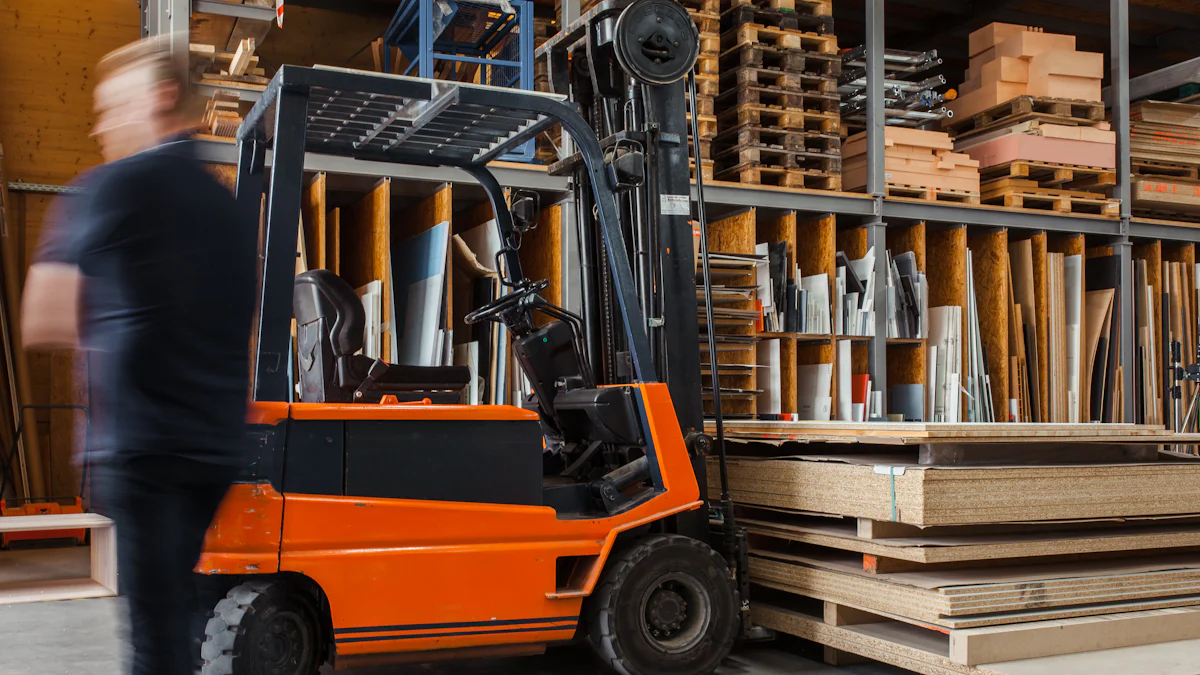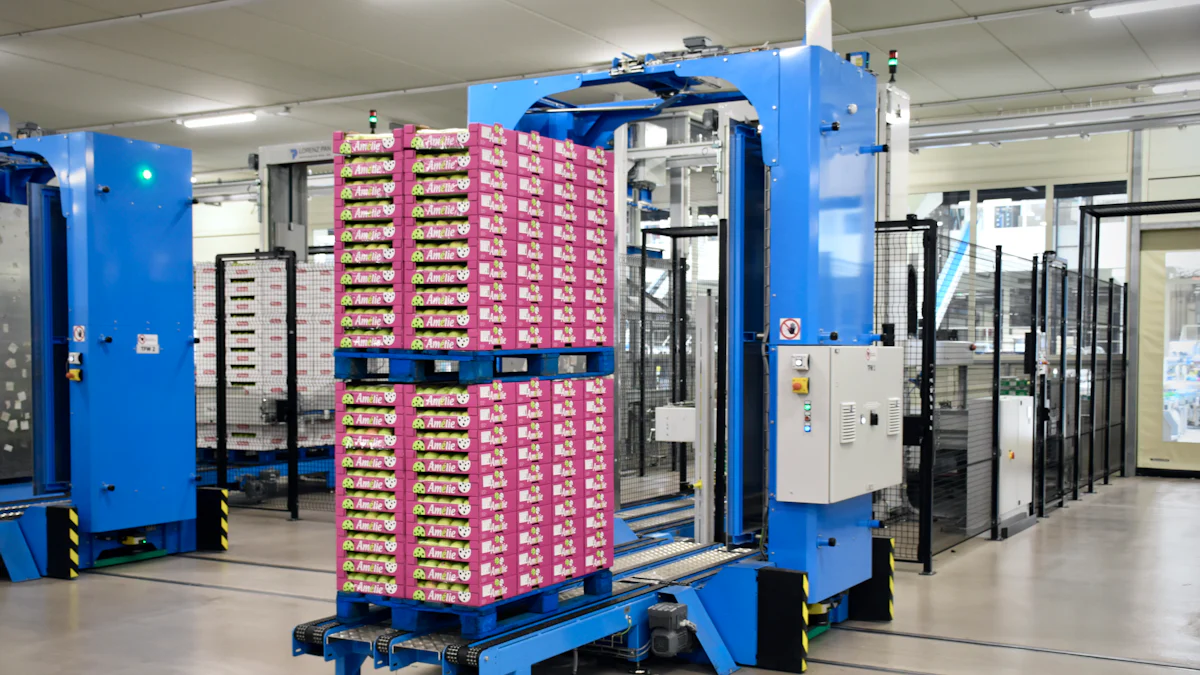How to Choose the Perfect Pallet Jack for Your Business

When it comes to your warehouse operations, the choice of the right pallet jack holds immense significance. Understanding what a pallet jack is and how it functions can revolutionize your material handling processes. The impact of selecting the appropriate pallet jack resonates beyond mere transportation; it directly influences the efficiency and safety standards within your workspace.
Understanding Different Types of Pallet Jacks

Manual Pallet Jacks
Manual pallet jacks are the fundamental tools for material handling tasks. Their simplicity in design and operation makes them a versatile choice for various industries. Standard Pallet Jack is an economical option that efficiently moves heavy pallets without the need for complex machinery. This type of pallet jack features a spring-loaded loop handle, ensuring ease of use and durability over time. The ergonomic design of Standard Pallet Jack guarantees reliable performance, making it a cost-effective solution.
Features and Benefits
- Spring-loaded loop handle for effortless maneuvering.
- Ergonomic design for long-lasting service.
- Economical build requiring minimal maintenance.
Ideal Use Cases
- Stacking retail shelves in supermarkets.
- Delivering parts within manufacturing facilities.
- Loading and unloading trucks in warehouses.
Electric Pallet Jacks
Electric pallet jacks offer enhanced efficiency and ease of operation compared to their manual counterparts. These powered devices are ideal for businesses looking to streamline their material handling processes. The Weighing Scale Pallet Jack stands out with its unique feature of displaying load weights, catering to specific needs in loading bays and factory floors.
Features and Benefits
- Powered operation for increased productivity.
- Display of load weight for accurate measurements.
- Suitable for heavy-duty lifting tasks.
Ideal Use Cases
- Transporting heavy loads over long distances.
- Handling goods in large warehouses efficiently.
- Operating in environments with high load variability.
Specialized Pallet Jacks
For specialized applications, specialized pallet jacks provide tailored solutions to meet specific requirements within different work environments.
High-Lift Pallet Jacks
High-lift pallet jacks are designed to elevate loads to significant heights, allowing users to access elevated storage areas easily.
Weighing Scale Pallet Jacks
Weighing scale pallet jacks combine the functionality of a traditional pallet jack with the ability to weigh loads accurately, making them essential in settings where precise weight measurement is crucial.
Rough Terrain Pallet Jacks
Rough terrain pallet jacks are equipped with sturdy wheels and robust construction, enabling them to navigate uneven surfaces with ease, making them suitable for outdoor or rugged environments.
Key Factors to Consider
Load Capacity
Determining your load requirements is crucial when selecting a pallet jack. The weight capacity of pallet jacks varies significantly, ranging from 2,000 pounds to 12,000 pounds. For instance, manual pallet jacks can handle loads from 2,200 lbs to 5,500 lbs, while electric counterparts can lift up to 6,000 lbs. It’s essential to match the capacity of the pallet jack with your specific needs to ensure efficient material handling operations.
Determining Your Load Requirements
Understanding the weight of the items you typically move is the first step in determining your load requirements. By assessing the average weight of your palletized goods, you can identify the appropriate load capacity needed for your daily operations.
Matching Capacity to Your Needs
Once you have determined your load requirements, it’s vital to match this with the capacity of the pallet jack. Whether you deal with heavy-duty materials exceeding 5,500 lbs or lighter loads within the range of 3,000 to 5,000 pounds, selecting a pallet jack that aligns with your workload ensures smooth and safe handling processes.
Fork Length and Width
The fork length and width of a pallet jack play a significant role in its compatibility with different pallet sizes. Standard sizes are commonly available but opting for custom sizes can cater to specific applications where standard dimensions may not suffice.
Standard Sizes
Standard fork lengths and widths are designed to accommodate typical pallet sizes found in most warehouses and distribution centers. These dimensions provide versatility in handling various loads efficiently.
Custom Sizes for Specific Applications
In scenarios where standard sizes do not meet your operational needs, custom fork lengths and widths offer tailored solutions. Customizing these dimensions ensures seamless compatibility with unique pallet sizes or specialized handling requirements.
Lift Height
Meeting vertical lifting requirements is essential for optimizing storage space utilization and enhancing operational efficiency within your facility. Different applications may demand varying lift heights based on stacking configurations and storage constraints.
Meeting Vertical Lifting Requirements
Selecting a pallet jack with an appropriate lift height ensures that you can reach desired storage levels without difficulty. Whether it’s accessing high shelves or stacking goods at different heights, choosing a suitable lift height enhances productivity in material handling tasks.
Applications for Different Lift Heights
The versatility of adjustable lift heights caters to diverse applications across industries. From low-level lifting for ground-level loading docks to elevated positions in multi-tiered storage systems, having flexibility in lift height expands the usability of your chosen pallet jack model.
Flooring and Environment
Flooring Types
- Consider the nature of your workspace when selecting a pallet jack. Different flooring types, such as concrete, asphalt, or tiled surfaces, can impact the performance and longevity of your equipment.
- Concrete floors are commonly found in warehouses and industrial settings due to their durability and smooth surface, ideal for seamless pallet movement.
- Asphalt surfaces are prevalent in outdoor environments where pallet jacks may encounter rough terrain or uneven ground. Choosing a robust pallet jack that can navigate such conditions is essential for operational efficiency.
- Tiled floors offer a smoother surface compared to concrete but may require additional traction features on the pallet jack wheels to prevent slippage during operation.
Environmental Considerations
- Evaluate the environmental conditions of your facility to ensure the selected pallet jack can withstand temperature variations, moisture levels, and exposure to chemicals.
- Extreme temperatures can affect the performance of hydraulic systems in pallet jacks, leading to potential malfunctions. Opting for models with temperature-resistant components is advisable in such environments.
- High humidity levels can cause corrosion on metal parts of the pallet jack, impacting its structural integrity over time. Regular maintenance and rust-proofing measures are crucial for longevity.
- Chemical exposure in industries like manufacturing or pharmaceuticals requires pallet jacks with resistant coatings or materials to prevent damage from spills or leaks.
Maneuverability
Turning Radius
- Assess the turning radius of a pallet jack based on your workspace layout to ensure smooth navigation around corners and tight spaces.
- A smaller turning radius allows for greater agility in confined areas, enabling operators to maneuver efficiently without causing disruptions to surrounding operations.
- Electric pallet jacks typically have tighter turning capabilities than manual counterparts due to their powered steering mechanisms, offering enhanced precision during handling tasks.
Ease of Use in Tight Spaces
- Operating a pallet jack in narrow aisles or congested areas requires ease of maneuverability and control. Select models with compact designs that facilitate movement within limited spaces without compromising load stability.
- Lightweight pallet jacks are advantageous when navigating tight corners or crowded storage areas, reducing operator strain and enhancing overall productivity by minimizing handling errors.
Durability and Build Quality
Material Considerations
- The durability of a pallet jack is influenced by the quality of materials used in its construction. Opt for models crafted from high-strength steel or reinforced alloys for long-lasting performance under heavy workloads.
- Stainless steel components offer resistance against corrosion and wear, making them suitable for demanding environments like food processing facilities or cold storage units where cleanliness is paramount.
Longevity and Maintenance
- Regular maintenance routines are essential for preserving the longevity of your pallet jack. Implement scheduled inspections, lubrication of moving parts, and prompt repairs to prevent premature wear and breakdowns.
- Investing in durable components upfront reduces the frequency of replacements and repairs, ultimately lowering long-term maintenance costs associated with keeping your pallet jack operational.
Cost vs. Value
Initial Investment
Budgeting for Your Purchase
- Evaluate your financial resources before investing in a pallet jack to ensure it aligns with your budget constraints.
- Determine the total cost of ownership by considering not just the initial price but also potential maintenance expenses over time.
- Research different models and brands to find a pallet jack that offers the best value without compromising quality.
- Seek quotes from multiple suppliers to compare prices and negotiate favorable deals that suit your budgetary requirements.
Comparing Prices
- Analyze the pricing structures of various pallet jack providers to identify competitive offers within the market.
- Consider additional costs such as shipping fees, warranties, and after-sales services when comparing prices between different suppliers.
- Look for discounts or promotions that may be available during specific periods to maximize cost savings on your pallet jack purchase.
- Prioritize value over price alone by assessing the features, durability, and long-term benefits each pallet jack model offers.
Long-Term Value
Maintenance Costs
- Anticipate ongoing maintenance expenses by factoring in regular servicing, repairs, and replacement parts for your pallet jack.
- Implement preventive maintenance schedules to prolong the lifespan of your equipment and minimize unexpected breakdowns that can incur higher repair costs.
- Invest in quality components and accessories that enhance the durability of your pallet jack, reducing long-term maintenance expenditures.
- Train staff on proper handling techniques and care practices to prevent unnecessary wear and tear on the equipment, ultimately lowering maintenance costs.
Operational Efficiency
- Enhance operational efficiency by choosing a pallet jack that aligns with your workload demands and workflow processes.
- Opt for models with advanced features like ergonomic handles, adjustable forks, or digital load indicators to streamline material handling tasks effectively.
- Conduct regular performance evaluations of your pallet jack usage to identify areas for improvement and optimize operational workflows accordingly.
- Monitor energy consumption levels if using electric pallet jacks to ensure cost-effective operations while maintaining high productivity standards.
Safety Features

Braking Systems
Types of Brakes
- Electric pallet jacks are equipped with regenerative braking systems that convert the kinetic energy generated during braking into electrical power, enhancing efficiency.
- Manual pallet jacks utilize mechanical braking mechanisms such as hand levers or foot pedals to control speed and halt movement securely.
Importance of Reliable Braking
- Ensuring reliable braking systems on your chosen pallet jack is paramount to prevent accidents and maintain operational safety.
- Properly functioning brakes guarantee smooth deceleration and precise stopping, reducing the risk of collisions and damage to goods.
Ergonomic Design
Reducing Operator Fatigue
- Ergonomically designed pallet jacks feature adjustable handles and controls that minimize strain on operators during prolonged use.
- By reducing physical exertion and repetitive motions, ergonomic designs contribute to a comfortable working environment and enhance overall productivity.
Enhancing Safety and Comfort
- Prioritizing ergonomic features in your pallet jack selection promotes operator well-being by preventing musculoskeletal injuries and fatigue.
- Comfortable seating options, cushioned backrests, and intuitive controls improve operator focus, leading to safer material handling operations.
- Summarize the critical aspects of selecting the right pallet jack based on load capacity, dimensions, and operational environment.
- Making an informed decision ensures seamless material handling processes and boosts workplace efficiency.
- Evaluate your unique requirements before investing in a pallet jack to optimize productivity.
- Explore Zoomsunmhe’s range of material handling equipment for reliable solutions tailored to your business needs.
See Also
Post time: Jul-04-2024
